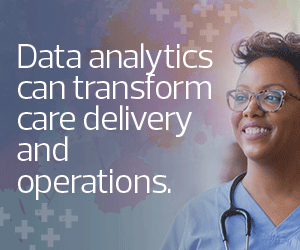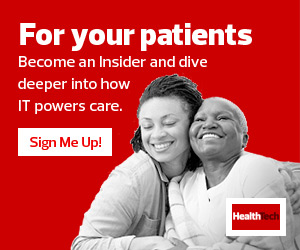What Is Digital Health?
“It’s such a simple question, but everybody defines digital health differently,” says Dr. Denise Basow, Ochsner Health’s first chief digital officer. “It certainly means everything from using artificial intelligence to help with diagnosis and drug development to health apps and wearables.”
She says that digital health also includes virtual care solutions such as telehealth that aid in chronic illness care.
“I’m not sure that there’s a single definition. We just keep adding to that list,” says Basow.
While digital health can refer to many different types of technologies in healthcare, Basow points out that the focus shouldn’t be on what digital health is exactly, but what healthcare is like in a digital world. The same thing applies to a digital strategy: She says it’s not about having a digital strategy, but about having a strategy for a digital world.
Rab defines digital health as the use of digital technology to serve the consumer and the provider in a way that allows them to have an intimate relationship that improves health. Ultimately, it’s about technology facilitating a connection between a doctor and patient.
How Can Health IT Leaders Best Implement Digital Health Tools?
One way many healthcare organizations are addressing an increasingly digital world is by creating a chief digital officer role. Sometimes the CDO and CIO roles are combined to form a chief digital and information officer role.
The pandemic led to more demand for virtual visits and remote work. Rab says that amid this changing landscape, the CDO emerged to accelerate the delivery of care from the traditional in-person environment to homes or wherever care is delivered.
“The role of the CDO is not only to increase the business and revenue but to deliver a quality care experience,” he adds.
EXPLORE: How to transform the patient experience with cloud tools.
That experience must apply to all patient touchpoints, especially as patients increasingly demand digital-first access to providers and experienced clinicians. Rab emphasizes the importance of using digital health tools to achieve the Quintuple Aim.
“The chief digital officer needs to understand the business, speak the language and have the passion to bring that change,” he says, adding that another important characteristic in a CDO is empathy. “Without that, your passion will not come forward. Your business mind will not come forward. Because who are you doing this for? You’re not doing this for your own personal glory. You’re doing this for the greater good of society and humanity.”
Basow says that a hospital CIO traditionally focuses on technology related to workflow and the electronic health record, as well as all the traditional IT that supports the organization. While traditional IT is critical to the operation of a healthcare organization, she says she views her role as a CDO as someone who thinks about the evolution of care in a world of fast-moving technology advances.
“In many cases, the technology is the easy part,” she says. “It’s about the care process, the people who go around that technology, and how it influences how we see patients. The promise of digital health is that we can become more efficient, predictive and preventive in how we care for patients.”
She also says that it’s also important for CDOs to focus on clinician wellness. When implementing technology such as a new telehealth platform, Basow explains, understanding the process around that technology is as important as sorting out technical issues.














